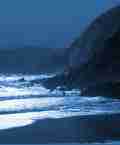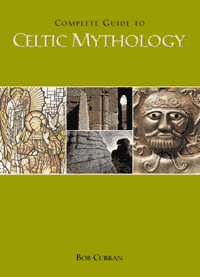 |


|
|||
 IN SEARCH OF ANCIENT IRISH HEROES - part 2 of 5 Traditionally, according to several Classical writers, the early Celts often fought naked, but helmets, shields and harnesses, together with pieces of armour, were sometimes employed and there is evidence for a type of chain-mail as protection against sword attacks. The elaborate detail inscribed on some of the armour that has been recovered, suggests that these were far from mere functional items of equipment; many might have held supposed magical properties or, at least, been of symbolic importance to the wearer. Some helmets from central Germany had stylised bronze horns attached to them, suggesting ferocity and aggression. Other helmets had been fashioned in the shape of 206 boars’ heads, presumably for the same purpose. By wearing these, the warrior claimed allegiance to the gods represented and invoked their aid during the ensuing conflict. He might have imagined that he became one with the deity and that supernatural power flowed through him. This was known as the ‘riastradh’, or ‘battle spasm’ among the ancient Irish and was strongly associated with great warriors or heroes such as Cú Chulainn. A frightening description of the warrior in a state of riastradh is described in the great Irish epic, the Táin Bó Cuailnge – The Cattle Raid of Cooley. He shakes from head to toe and revolves within his skin that becomes red and hot to touch. His features become bestial – one eye becoming large and bloodshot while the other becomes extremely small and menacing. His mouth becomes impossibly large and emits both fire and sparks, while his hair becomes spiked and emits further flame. The ‘warrior light’ shines on his brow, temporarily blinding all that come near him. In this state, he is uncontrollable but also invincible. He seems to be little more than a magical killing machine that cannot be harmed. When the riastradh has abated, Cú Chulainn is left drained and weakened. There seems little doubt that the Celts considered this frenzy to be possession by the warrior-gods or spirits and it might have been channelled through a weapon or talisman – in Cú Chulainn's case, it might have been his gae bolga or great war-spear. Nor was Cú Chulainn the only warrior to experience the riastradh because, according to classical accounts, battle-frenzy seemed common among the Celtic armies, turning them into formidable and almost invincible fighters. When in this state, the warrior was at one with the god and seemed divine, becoming a physical representation of an elemental force. The iconographic representation of battle-gods in this early period is relatively sparse. It might be that the Celts had little conception of how the deity should look, or that they felt no need to represent what was essentially an insubstantial battle-force. Where iconography exists, it is difficult to know whether those represented are gods or people overcome by supernatural frenzy. Celtic coins, probably issued during times of conflict, often depicted acts of warfare. Individual warriors, cavalry, chariots and groups of infantry were all represented, as was the total rout of an enemy. Coins issued by the Andecavi, a tribe based around Angiers in France, show the horses of a charioteer trampling a fallen foe who lies supine beneath their hooves, complete with shield and spear. Interestingly, a number of coins from Britain and Gaul depicted a warrior with a great crow perched on his back. This is clearly indicative of the three-fold goddess – Morrigan, Macha and the Badhbh – who represented war, slaughter and death. It appears that this goddess possessed the warrior and granted him victory on the battlefield. We know too, of the British war-goddess, Andraste, clan-patroness of the war-like Iceni and mentioned by the writer Dio Cassius. In early iconography, chain mail or body armour was sometimes depicted as bearing a severed head on the breastplate. This might have been to terrify a warrior’s enemies with the promise of their inevitable fate and is to be found in artwork from Celtic Gaul and parts of Britain. Accounts by Classical writers speak of severed heads hanging from the saddlebows of Celtic horses as a warning to their foes. This Chapter extract continues with In Search of Ancient Irish Heroes - Part 3>>>.
From Complete Guide to Celtic Mythology by Bob Curran |
[ Back to top ]
All Material © 1999-2009 Irelandseye.com and contributors

